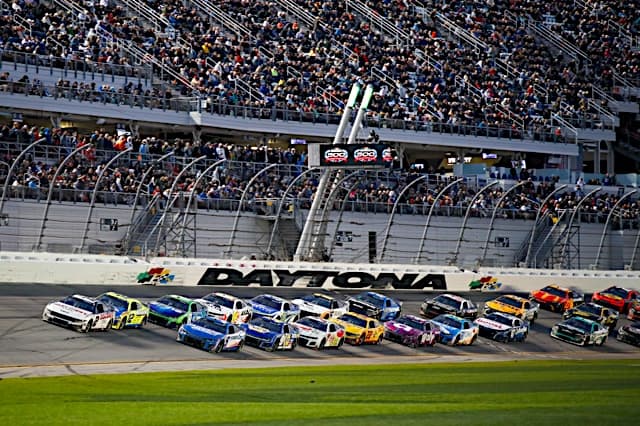This year marks the second consecutive year that the NASCAR Cup series will race on the street circuit of Chicago. Last year, the inaugural contest on the track brought a wild show, with a figurative monsoon throwing the event into chaos and the dimming light and slippery course adding to the overall experience.
Whether or not it was a good race may be up for debate, but the July 2nd affair came across as a captivating event, even if the rain waylaid the schedule a bit. Of course, rain and the Independence Day race have been conjoined since 1959, when NASCAR began consistently holding the Firecracker 400.
And what we learned over the past couple of seasons is that rain and racing go together like Chinese food and chocolate pudding, or cocaine and waffles. Thanks, Cal Naughton, Jr. The rain tire experiment in New Hampshire a couple of races ago gave us another data point in thinking about how NASCAR and rain have yet to find the same relationship that Formula 1 has, but the live-testing element sure is fascinating.
This time around in Chicago, the forecast indicates that rain might not be the same influence, with a potential appearance on the lower side. Then again, one of the axioms regarding whether in the Midwest is, give it 15 minutes and see if it is still the same. But really, the focus here is on how, since jettisoning what had been a ʻtraditionalʻ date on the calendar, the race has become a nomadic, underwhelming race on a day meant for celebrating the very spectacle that is America.
Think about it: from 1959 to 2019, the second Daytona race was held on or near July 4th. I am not going to stoke the silliness of tradition because tradition is itself a constructed idea that we are willing to believe. After all, we are told that it is tradition and that to go against tradition is, somehow, bad.
Some traditions are terrible and should have vanished ages ago. Some traditions take longer than others to reconsider. Do you remember the days when the lap-down cars used to line up on the inside racing line on restarts? That seems like lunacy at this point, but for years, that was the norm. Think about how drivers used to race back to the start-finish line, a foolish practice that was finally done away with probably a little too late.
Many things in sports are traditions because that’s just the way it isʻ. Just the way it is seems to sit as shorthand for unwillingness to rethink or find new means of doing something. For a…
Click Here to Read the Full Original Article at …

